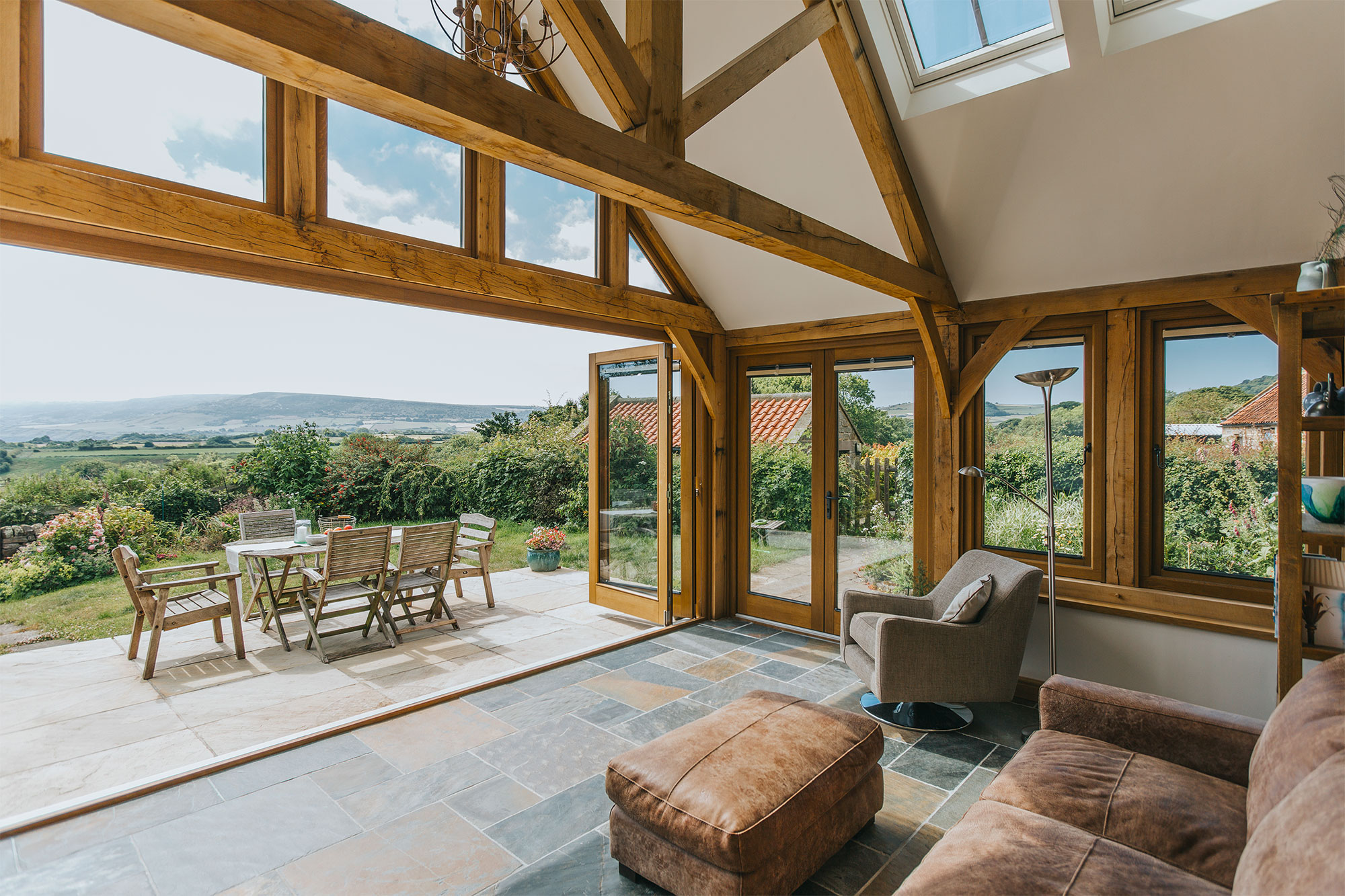You don’t need to build a whole new property from scratch to enjoy the benefits of an oak frame structure in your home, as extending with this construction method can be a great solution.
Here I’m addressing the key considerations when it comes to adding extra living space to your house using an oak frame.
Where should I start with the design?
If you’re beginning to plan an oak frame home extension, it’s important to start by understanding how you want the space to be used as this will inform the style and the layout of the addition.
Depending on what you want to achieve, I advise you look at the new room as a blank canvas and ignore what is already there, as it may put hurdles in front of great ideas.
Sketching out floor plans is a great way to help develop your ideas in these early design stages.
Once you have an idea of the size and space you want from the new extension, it’s time to think about the external appearance.
Don’t worry about having to match the existing house, as using different materials can work to enhance the aesthetics of the entire building.
For example, an oak frame addition to a brick, stone or rendered property can complement the original dwelling whilst adding some extra wow factor.
Do I need to appoint a professional designer?
You don’t always need to involve an architect for standalone extensions. Most manufacturers who produce oak frame extensions (including sun rooms, garden rooms and orangeries) have in-house design consultants who can help you come up with the best scheme. Some can submit the drawings to planning on your behalf.
It’s always advisable to engage the skills of a company with expertise in the construction method you’re using.
With oak frame there are guidelines to make the most of your new space that might be missed if a designer doesn’t regularly work with this build system.
For instance, spans over 7m are harder to achieve in one oak beam, so posts may need to be integrated, which will influence your design. So always go with a company that has plenty of experience.

An oak frame extension offers the opportunity for a light-filled space, thanks to a natural partnership with expansive glazing.
Left: This striking new addition looks fantastic alongside the stonework on the original property [Credit: Lydia Harper]
How will the new frame connect to my house?
There is no easy answer for this as it varies greatly depending on how it was built, as well as the extension.
At Oakwrights, we treat every project individually, which means our team will talk you through all aspects specific to your build.
Will I need planning permission?
With any addition to your home, it’s important to understand what planning laws apply. An oak frame extension may come under permitted development rights.
These allow homeowners to extend, under certain criteria, without needing to seek formal consent from their local council.
To understand this more in the context of your own project, it’s always worth doing some research on the Planning Portal website.
If you’re already talking to a company about working on your extension, ask them about planning, as they will be able to help give you specific guidance.
| Charlie Mills is head of Oakwrights Country Buildings & GreenRooms.
These divisions specialise in extensions and outbuildings, with parent company Oakwrights presenting expertise in producing bespoke oak frame homes. If you’re interested in contacting Oakwrights about your oak frame extension call 01432 353353 or visit www.oakwrights.co.uk. |
The post Planning an oak frame extension appeared first on Build It.
Article reference Planning an oak frame extension
No comments:
Post a Comment